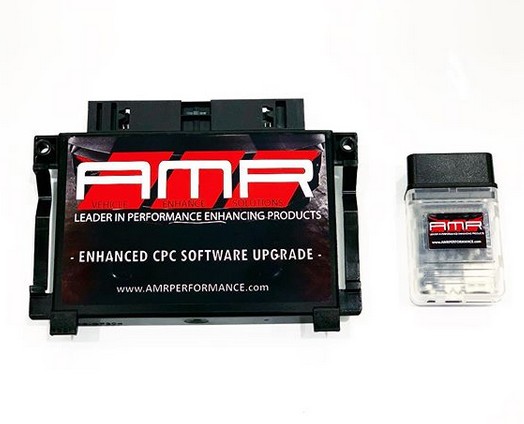Mercedes-Benz vehicles are renowned for their luxury and performance. However, even these high-caliber machines can be further optimized to unlock their full potential. At carparteu.com, we specialize in automotive enhancements, and we’re excited to delve into how Cpc Obd2 Software upgrades can revolutionize your Mercedes-Benz driving experience. This article will explore the benefits of these upgrades, focusing on how they can elevate your vehicle’s performance through simple OBD2 port modifications.
Understanding the CPC Module in Mercedes-Benz Vehicles
Introduced in 2015 in Mercedes-Benz turbo models, the CPC (Central Powertrain Controller) module acts as a crucial electronic control unit (ECU). Its primary function is to govern the powertrain capabilities of your vehicle. This includes managing vital aspects such as horsepower output, torque delivery, boost pressure, exhaust valve operation, and top speed limitations. Think of the CPC as a gatekeeper, regulating the raw power of your Mercedes-Benz engine according to factory settings.
These factory settings, while ensuring reliability and meeting regulatory standards, often leave significant performance on the table. Mercedes-Benz, like many manufacturers, designs vehicles to cater to a broad market, which means performance is sometimes intentionally limited. This is where CPC OBD2 software upgrades come into play. By accessing and modifying the CPC software, we can bypass these limitations and tap into the true capabilities of your engine.
Unleashing Hidden Power with CPC OBD2 Software
CPC OBD2 software upgrades, like those offered by leading tuners such as AMR Performance, provide a pathway to eliminate these factory-imposed restrictions. These upgrades are typically performed through the OBD2 port, the standard diagnostic port found in all modern vehicles, making the process relatively straightforward and reversible. The enhancements achieved through CPC software modifications are substantial and directly translate to a more exhilarating driving experience. Specifically, a CPC OBD2 software upgrade can deliver the following benefits:
- Torque Limit Elimination: Factory CPC settings often restrict torque output to preserve drivetrain components and ensure longevity under a wide range of driving conditions. CPC OBD2 software removes these artificial limits, allowing the engine to produce and utilize higher torque levels. This results in significantly improved acceleration and responsiveness, especially in mid-range and higher gears.
- Engine Speed Limit Removal: Similar to torque, engine speed (RPM) is often limited by the CPC software. Upgrading the CPC software can raise or eliminate these RPM limits, allowing the engine to rev higher and access more power in the upper rev range. This is particularly beneficial for performance driving and track days.
- Horsepower Limit Elimination: The CPC module directly impacts the maximum horsepower your engine can produce. Factory software restricts horsepower to meet various criteria. CPC OBD2 software tuning removes these bottlenecks, enabling the engine to unleash its full horsepower potential. Expect a noticeable increase in overall power and a more dynamic driving feel.
- Vehicle Speed Limit Removal: Many Mercedes-Benz vehicles, particularly those sold in certain markets, have electronic speed limiters. CPC OBD2 software upgrades can eliminate these speed limiters, allowing your vehicle to reach its true top speed, where legal and safe to do so.
- Enhanced Throttle and Engine Response: CPC software modifications can refine the throttle mapping and engine speed adaptation. This results in a quicker and more direct response to throttle inputs, creating a more connected and engaging driving experience. The engine feels more eager to rev and reacts instantly to driver commands.
- Optimized Exhaust Valve Control: For vehicles equipped with electronically controlled exhaust valves, CPC software can enhance the control logic. This can lead to more aggressive exhaust valve opening strategies, resulting in a more pronounced and sporty exhaust note, particularly during performance driving.
These enhancements collectively transform the driving dynamics of your Mercedes-Benz. By optimizing the CPC module through OBD2 software, you unlock a more responsive, powerful, and ultimately more enjoyable vehicle.
Complementary TCU Software Upgrades
While CPC software focuses on engine performance parameters, the TCU (Transmission Control Unit) governs the transmission’s operation. For a truly comprehensive performance upgrade, consider pairing CPC OBD2 software enhancements with a TCU software upgrade.
The TCU dictates shift patterns, shift points, RPM limits during gear changes, torque management during shifts, and overall transmission behavior. Similar to the CPC, factory TCU settings are often conservative. TCU software upgrades, also typically performed via the OBD2 port, can refine these settings for enhanced performance.
TCU upgrades often include benefits such as:
- Increased torque limits within the transmission.
- Removal of the transmission speed limiter.
- A broader and stronger power band utilization through optimized shift points.
- Reduced transmission slippage for more efficient power transfer.
- Firmer and faster shift patterns for a sportier feel.
- Smoother yet quicker gear changes.
By upgrading both the CPC and TCU software via the OBD2 port, you achieve a synergistic effect, optimizing both engine and transmission performance for a truly transformed driving experience. These upgrades, offered by specialists like AMR Performance, are engineered and tested to ensure reliability and performance gains, making them a compelling option for Mercedes-Benz enthusiasts seeking to maximize their vehicle’s potential.
Supported Systems: VGSNAG2 | VGS4NAG2 | VGSNAG3 | CPC_NG
